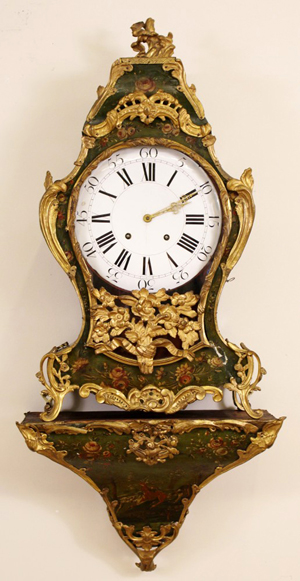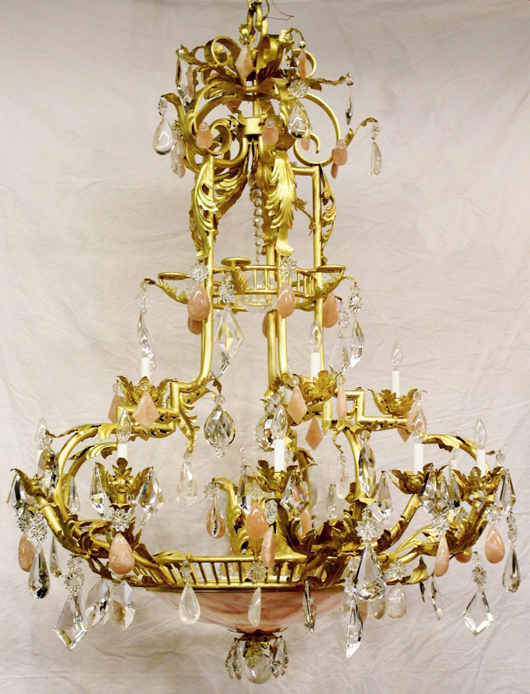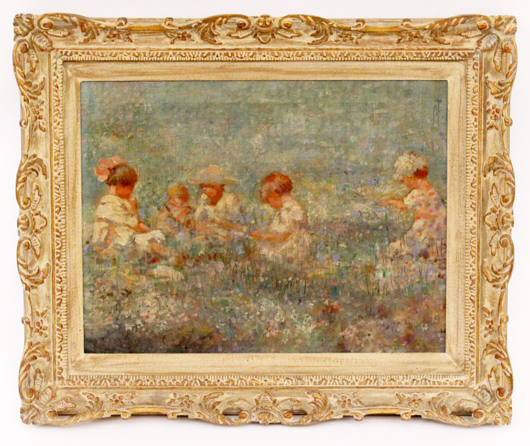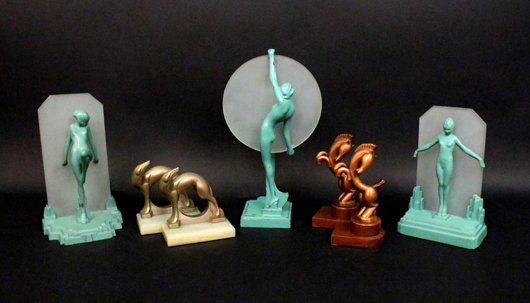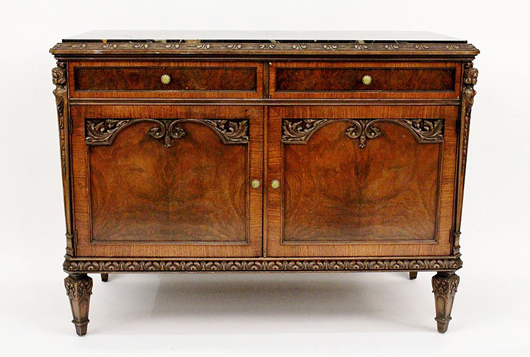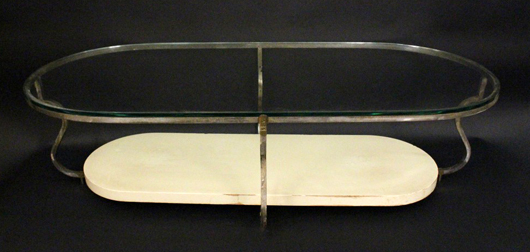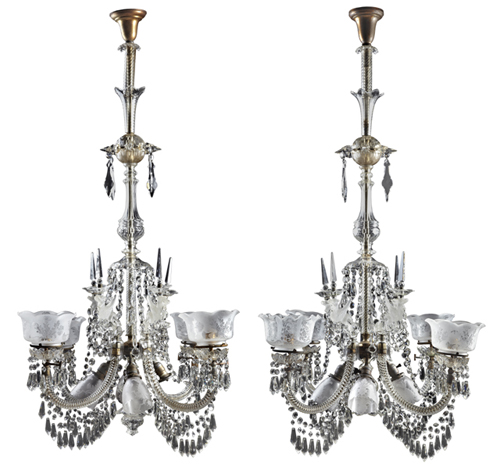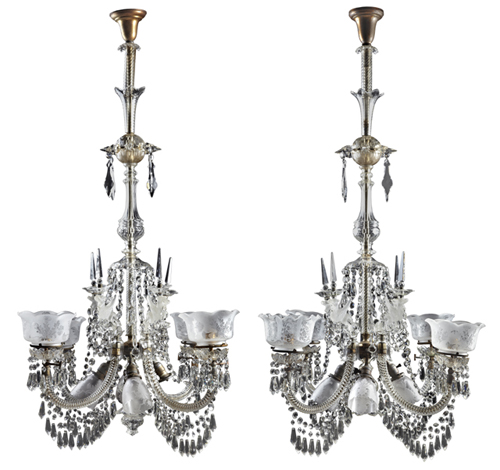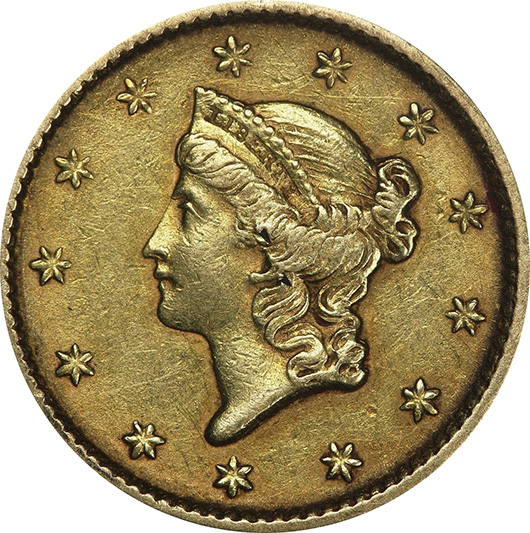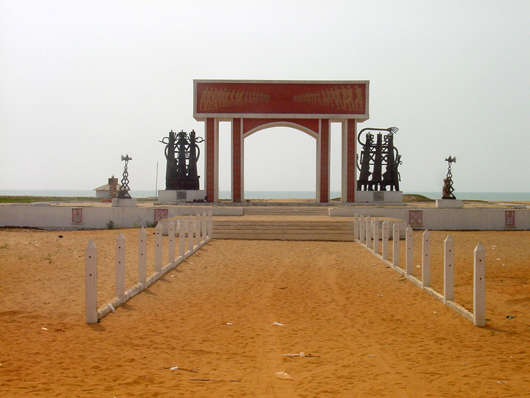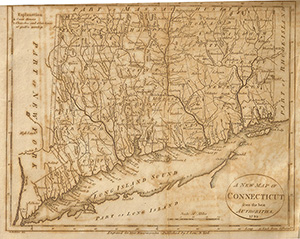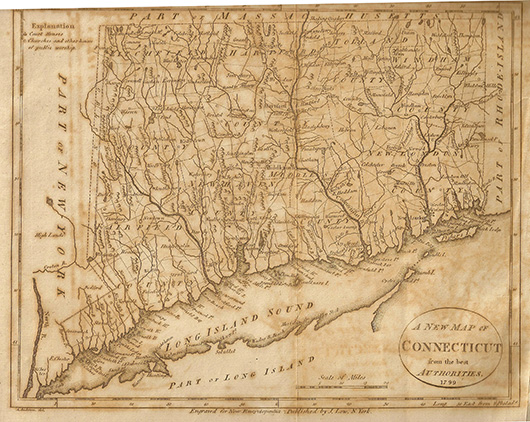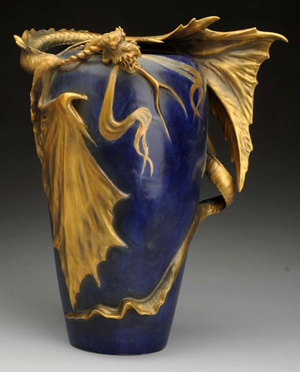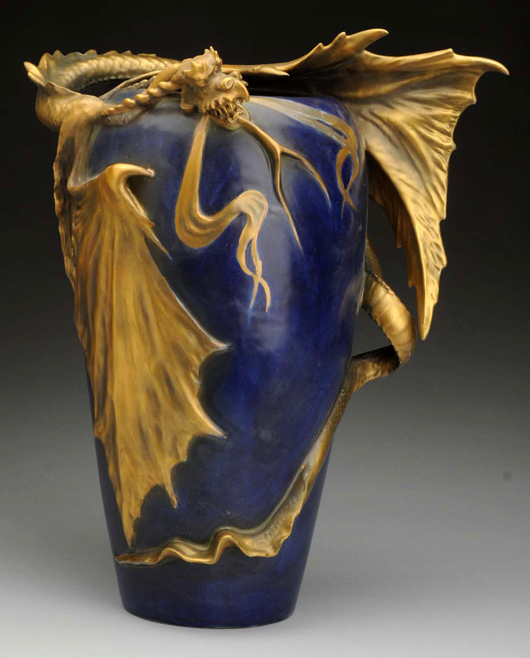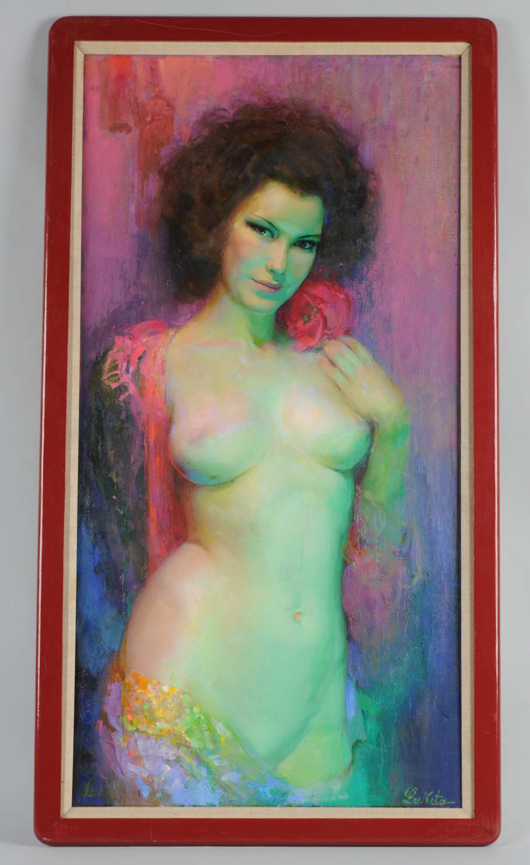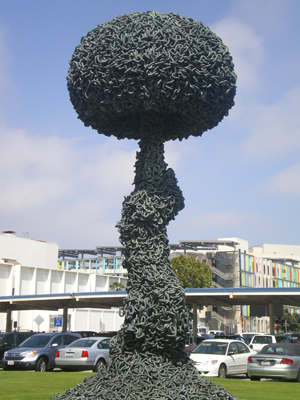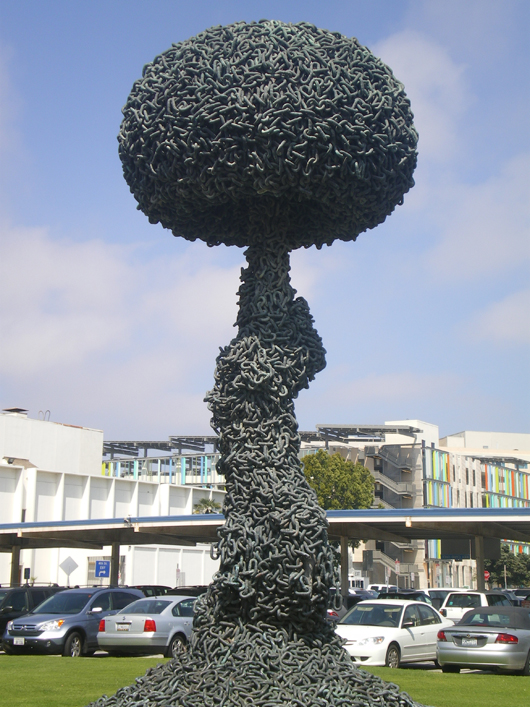
Lot 286. Kamelot Auctions image. PHILADELHIA – Kamelot Auctions’ annual Mid-Century and Design sale was held on Saturday, Feb. 22, in Philadelphia, attracting a large bidding contingent that included designers, craftsmen, and private collectors. The sale offered a range of property including furniture, lighting, and sculpture from the Art Nouveau, Arts & Crafts, Art Deco, Modernist and Contemporary movements.
LiveAuctioneers.com facilitated Internet live bidding.
Interest in mid-century modern remains high across the board, particularly for iconic designs. The auction featured a selection of classic Gio Ponti-style designs, including a pair of commodes, each having six parchment front drawers supported on tapering bronze legs, which sold for $7,400 (lot 311). Similarly was lot 253, a mid-century modern parchment-covered dresser, circa 1960, sold for $1,680 against an estimate of $500-$700. Other stunners included an Ico Parisi-style mahogany desk having three floating drawers, circa 1960, which sold for $2,040 (lot 295); a Karl Springer-style chrome octagonal-form mirror, which brought $2,400 (lot 286); and a pair of labeled Knoll Eero Saarinen tulip tables having composite white top supported on metal base, circa 1960, which brought $1,320 (lot 458). Lot 296, a James Mont-style credenza having Asian inspired fretwork painted doors raised on a Greek key platform base, circa 1960, earned $2,280. Likewise, lot 295A, a James Mont-style painted wood and glass dining table, circa 1970, earned $1,920. Grossing over $14,000, a set of four mid-century modern Italian club chairs proved to be one of the auction’s top (lots 288 and 208), along with lot 94, a cerused oak sideboard, circa 1950, which grossed over $7,000.
The top lot of the day was a pair of Art Deco-style macassar demilune one-drawer console tables in the manner of Ruhlmann resting on tapered legs. The pair of tables far exceeded their estimate of $2,000-$3,000 and earned a final $10,200 (lot 221). Bidders responded with enthusiasm to the sale’s selection of Art Deco, and the category brought successful results across the board. Lot 207, a pair of ebonized Art Deco-style console tables having inset mirrored top supported on U-form base raised on silver trimmed plinth earned a whopping $4,560. Among other prized Art Deco pieces was a French sideboard having two diamond parquetry decorated doors that earned $3,120, a matched set of four macassar tapered pedestals that earned $1,560 (lot 204) and a good and unusual pair of carved Art Deco club chairs, circa 1930, that earned $1,800 (lot 199).
Lighting was another category that brought rewarding results. Leading the selection and with keen presale interest was a rare collection of 20 matching Murano glass shell-form sconces having gold fleck scroll decoration, circa 1970, (Lots 402, 403, 404, 405). The sconces brought a total of over $10,000. Lot 269, a substantial pair of George Kovacs mid-century modern Lucite table lamps earned $1,680, well above the projected estimate of $300-$500. Other highlights included a pair of bronze Jansen palm tree table lamps, circa 1950, which brought $1,920 (lot 166); a similar pair of Baques brass faux bamboo standing floor lamps, circa 1960, which brought $1,920 (lot 179); and a pair of stylish parchment covered floor lamps with bronze plated decoration, which brought $2,640 (lot 355).
Kamelot’s next sale will be the annual garden and architectural antiques auction to be held Saturday, April 12. For more information call 215-438-6990.
Click here to view the fully illustrated catalog for this sale, complete with prices realized.
ADDITIONAL LOTS OF NOTE
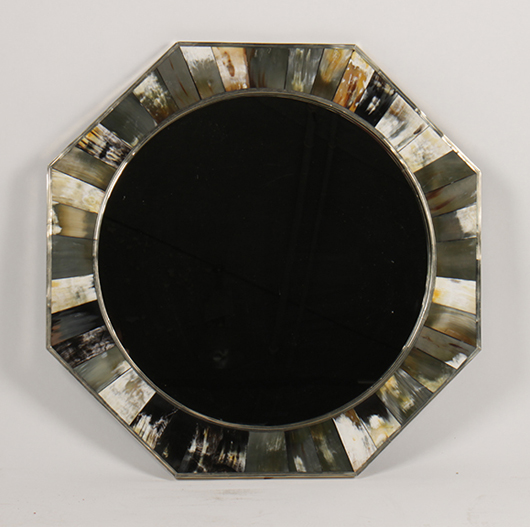
Lot 286. Kamelot Auctions image. 
The top lot of the day was a pair of Art Deco-style one-drawer console tables in the manner of Ruhlmann. Estimated at $2,000-$3,000, the pair achieved $10,200. Kamelot Auctions image. 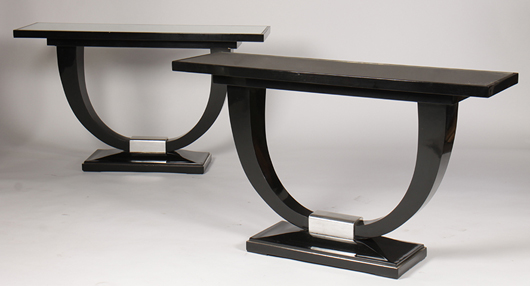
Lot 207. Kamelot Auctions image. 
Lot 278. Kamelot Auctions image. 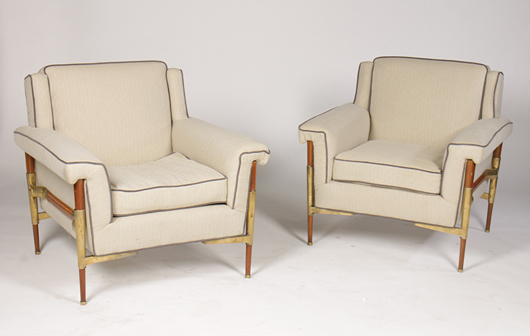
Lot 288. Kamelot Auctions image. 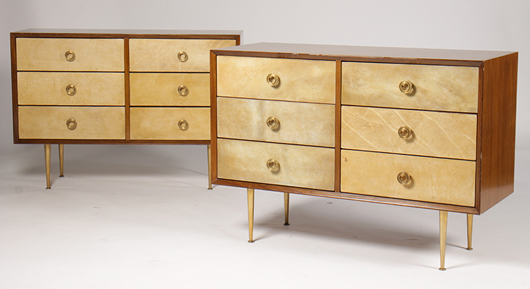
Lot 311. Kamelot Auctions image. 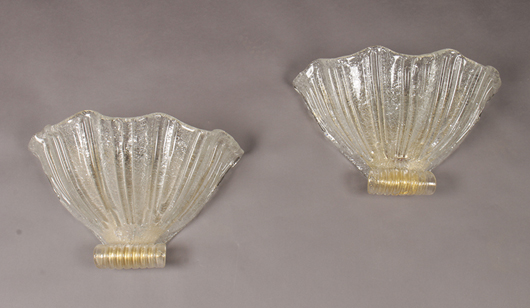
Lot 401. Kamelot Auctions image.



